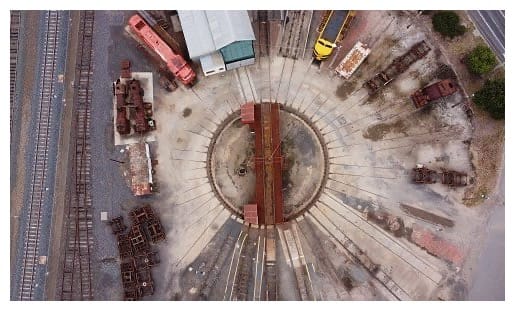Local government and economic development; a theory of change
Simon White | This article presents a theory of change for local government support for economic development.

How do local governments create change in the local economy? By understanding the theory of change local governments can focus their local economic development interventions. This improves the likelihood of success that will be sustained over time. It is key to understanding local government and economic development better.
A theory of change describes how and why the desired change is expected to happen in a particular context. It is something like a high-level business case. It describes the rationale for local government intervention and how the desired change in the local economy will be achieved.
This article is a companion to another on creating a virtuous local economic system.
Local governments influence local economic outcomes
Local governments influence local economic outcomes whether they intend to or not. A theory of change presents a local government’s explicit and intended approach to creating desired change.
But before diving into the details, it is necessary to acknowledge an essential underlying assumption. This is best presented as a question: Can local government do anything to improve the local economy?
Some people would answer no. The best thing for local government to do, they might say, is get out of the way. Alternatively, they might say, no, global market forces are too strong for any local body to change; we are pawns at the mercy of the global market system.
Much can be said about these arguments and the others like them. For now, I want to simply acknowledge and disagree with them.
Local governments and other local institutions and actors play a critical role in influencing the economy and the decisions of investors, businesses, workers, and the community. While capital is global, local context is a distinguishing feature worldwide.
Local governments have many tools for economic development
Local governments vary in their powers, mandates and resources. In Australia, local governments are creatures of state government legislation and have limited revenue-raising opportunities. Despite this, there are many tools local governments can use to support economic development.
These tools go beyond the programs and services of a local economic development unit. Local planning, governance, infrastructure, procurement, as well as parking and a range of social and community services are just some examples of the tools local governments can use that affect economic outcomes. However, local governments often ignore how these tools affect the local economy.
So, first off, local governments should recognise the many tools they have to promote economic development beyond those contained in an economic development unit.
Creating vibrant, liveable communities
There are various ways the desired outcomes of local economic development can be presented. Local context is everything. A local government in a remote, rural area might present its vision for economic development differently from a local government in a densely populated urban environment.
In general, many common themes describe why local governments are interested in developing the economy. Here are some of the ones I find most common:
- To increase the number and quality of local employment opportunities.
- To expand the services and products available to residents and visitors.
- Create a more liveable community for people of all ages and walks of life.
- To increase local investment to achieve the above – jobs, business, products, and services.
Local economic systems
Many elements of a desired local economic outcome are moving parts in a system that can lead to enabling and supporting better results. I call this a virtuous local economic system. Please see my article on this for more detail.
By thinking about the local economy in systems terms, we can appreciate the interconnections between the various parts. This shows how changes to one part of the system influence change in other parts. Understanding this is crucial to understanding the theory of change for local government’s economic development efforts.
Intervention logic for local economic development
Readers will be familiar with the typical categories of an intervention logic:
- Inputs. Financial, staff and other resources that are employed to undertake an activity and deliver an intervention or assistance.
- Activities. Actions taken or work performed through which inputs are mobilised to produce specific outputs.
- Outputs: The products, capital goods and services that result from an intervention. These might include changes resulting from the intervention, which are relevant to achieving outcomes.
- Outcomes: The likely or achieved short-term and medium-term effects of an intervention’s outputs. Outcomes are produced when the target group or beneficiary (e.g., the potential investor) uses the output (e.g., local investment prospectus).
- Impacts. Positive and negative, primary and secondary long-term effects produced by a development intervention, directly or indirectly, intended or unintended.
Each of these categories is designed with a particular purpose in mind. Indicators are formulated to track change in each category.
Notably, the links between these categories need to be identified and, where possible, tested. For example, it is assumed that offering training in business management will lead to local businesses being better managed and more likely to grow. But is this assumption correct? Are we focusing on the right areas for change? What if better local business management leads to reduced staff numbers?
Change mechanisms for local economic development
One essential element is missing from the above intervention logic categories. This is the role played by change mechanisms.
A change mechanism sits between Activities and Outcomes. A mechanism is not an activity because it focuses on the target group and not on what the local government does. An activity might have produced an output (e.g., visitor brochure, local event), but the target group has not yet used this. It is not an outcome because it has not yet led to a change.
Change mechanisms are the things that interventions cannot work without. They cause a change in the system.
For example, a local government wishing to attract private investment might prepare a local investment prospectus. Activities would be undertaken to collect economic data, consult with current investors and businesses, consider the local comparative and competitive advantages of the local economy, and so on. This activity would produce an output: a document highlighting the benefits of investing and doing business in the local economy. This may be a helpful activity and output. But how does it bring about change?
Typically, we would think about how the output–the local investment prospectus–will be used by the target group. How will we distribute it to get it into the hands of possible investors? These investors might be elsewhere in the state or another country. This discussion focuses on turning the output into an outcome.
Turning an output into an outcome requires a change
Because turning an output into an outcome requires a change, we need to think about what will cause a difference in the local economic system. We need to think about how specific economic actors will make the decisions that lead to change in the local economy. In this case, we want more potential investors to decide to invest.
What mechanisms for change will bring about more private investment in the local economy? The local investment prospectus will likely contribute to a part of this. For example, it might fill information gaps for potential investors who might not know how good a place your local economy is to invest in. But is this enough to attract more private investors? Probably not.
The local government would likely need to consider other aspects of the target group’s experience that will affect their decision. For example, what will their experience be when it comes to finding a commercial or industrial location, submitting a development application, or applying for the relevant local licenses and permits? Maybe they would benefit from an introduction to others in the local business community or information on the local labour market.
This brief example highlights the interconnections of various parts of the system that affect the decision of the target group. Change comes from these decisions.
Change mechanisms give more meaning to the theory of change
The use of change mechanisms provides more meaning to the theory of change.
For local governments wishing to improve the economic outcomes for the community, understanding the change mechanisms at work helps to consider crucial questions. It highlights the ways local economic actors respond to local government actions and how these responses affect the local economic system.
Several benefits come from this approach:
- Focuses on the target group and the rational decisions made by economic actors. Not thinking about mechanisms implies that people will respond to activities like robots. They might read the prospectus instantly, know more and decide to invest. In reality, it needs to be understood if the prospectus is to work. It must feel relevant. A potential investor would need to be able to apply the information and, along with other influencing factors, come to a decision.
- Reveals the assumptions underlying our logic. It makes us clear about what we assume will lead to change. We might be assuming that more information presented in a professional manner is all that is required to get a positive response from an investor. Do we have confidence in this assumption? Why?
- Consider the quality of change we desire. When we think about change mechanisms, we consider the intended causal processes. This encourages us to think about the kind of change we want and connects this change to the desired impact we’re working toward.
- Encourages the use of appropriate performance indicators. Local governments are encouraged to use indicators that measure this change and connect change to the broader desired impacts by focusing on change in the local economic system.
Why thinking about change in the local economic system is important
A theory of change is used to understand how and why outcomes are generated. It provides detailed information about how the mechanisms of change can enhance the application of theory into practice, help focus resources on key impact pathways, and support decision-makers in identifying avenues for change or improvement.
Local government can change the local economy for the better. By understanding the theory of change and the mechanisms through which change occurs, they can do this more efficiently, impactfully and sustainably.


